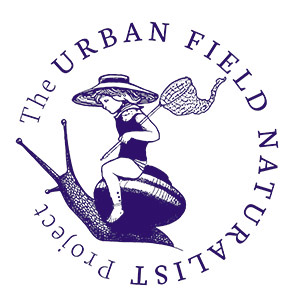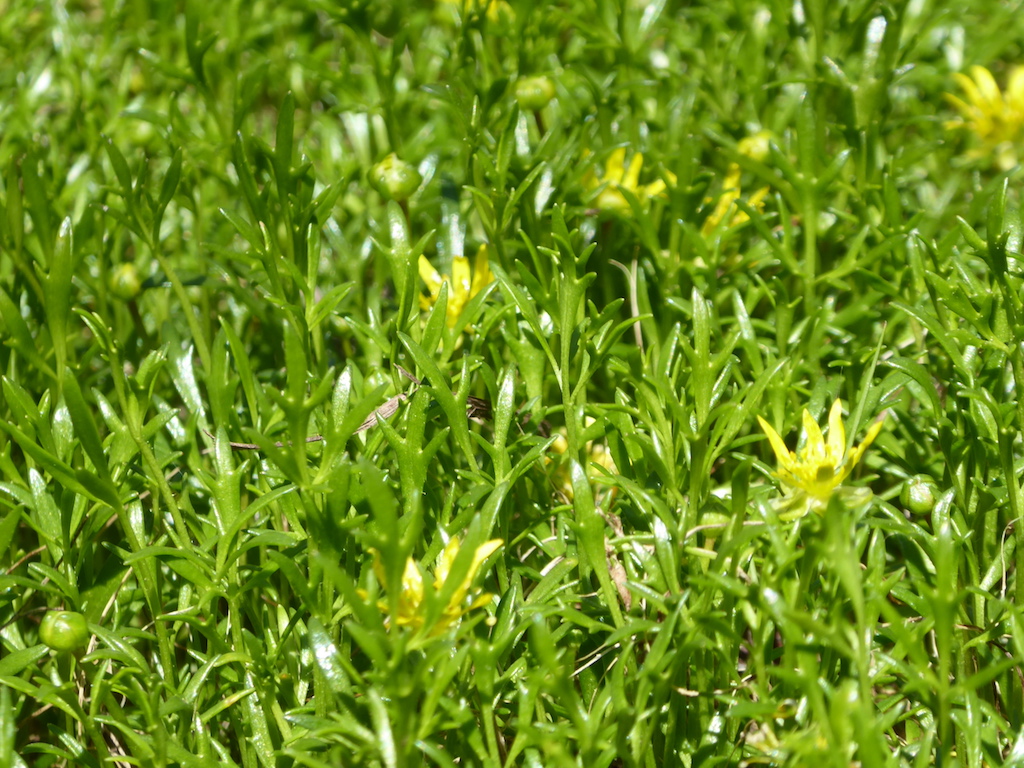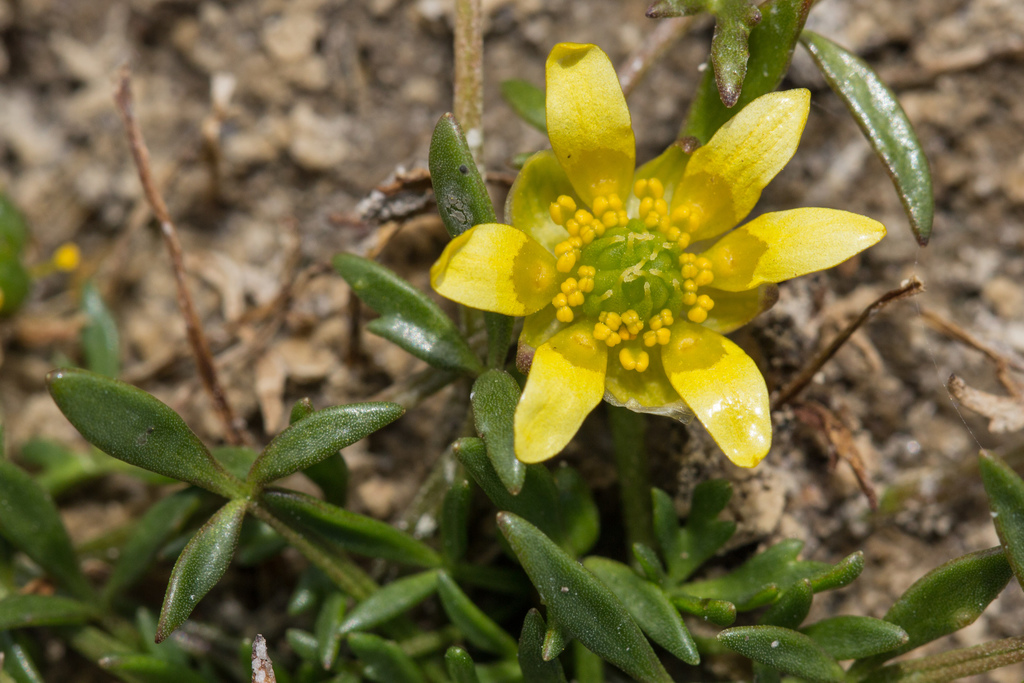
The Smallest of Things
Lucy Watson

Ranunculus prasinus, or more commonly the Tunbridge Buttercup, looks nothing like the showy, multi-coloured Ranunculas so common in cottage gardens. It is the smallest of things: a tiny green mat-forming herb with minute, yellow, star-like flowers. It forms a border around the edge of the pond in our front garden.
I thought it was dying during the winter but then late in the season dozens of little scrub wrens and silver eyes would visit, and swarm all over its decaying brownish green mat. I’m guessing that it might have been harbouring microscopic insects on which the little birds could feast.
Now that spring is underway the birds have stopped visiting, and the Buttercup is again a lush green carpet dotted with hundreds of little yellow flowers. Its visitors at this time of year are some of the many species of native bees who cleverly spread the pollen hidden in the tiny flowers.
It is a source of wonder to me that the Buttercup has grown so happily in our Hobart garden. In the wild it is a species of the marginal herbfields and tussock grasslands of brackish wetlands, known only from four sites on private land in the central midlands of Tasmania. It is listed nationally as an endangered species. In our garden it has me wondering if this smallest of plants and its little visitors might signal new possibilities for a very partial recuperation of urban biodiversity.

Author bio: Lucy is trying to grow a Tasmanian native garden and a food garden in a suburb in Hobart.